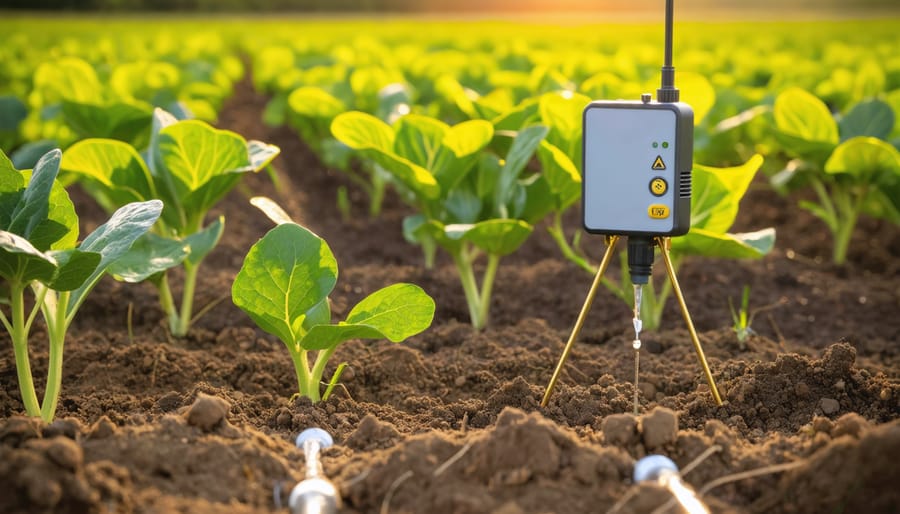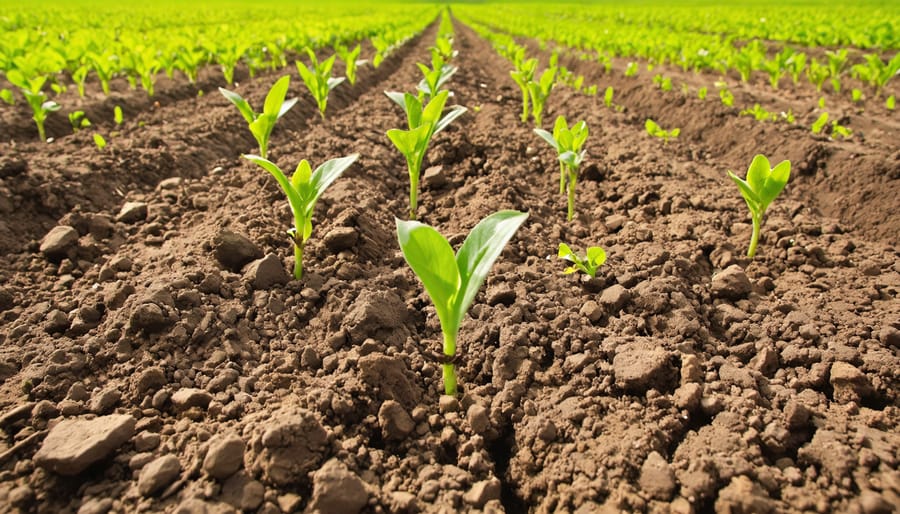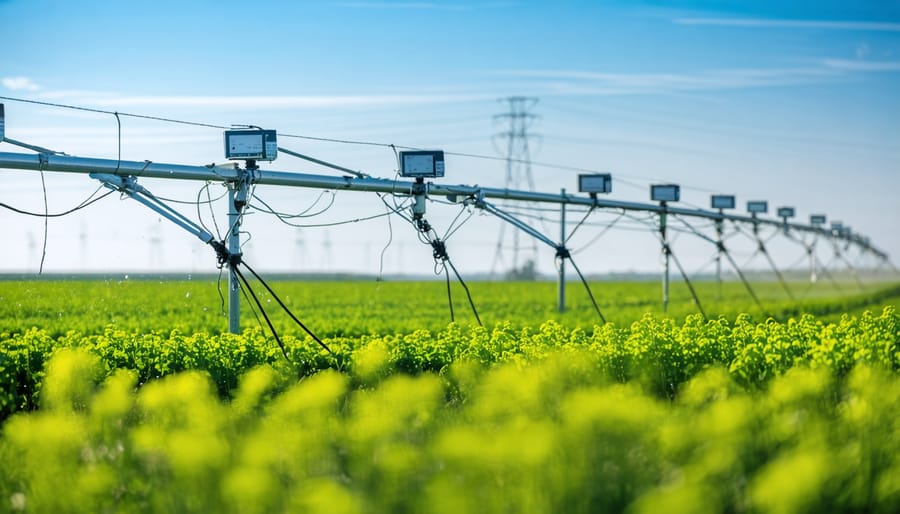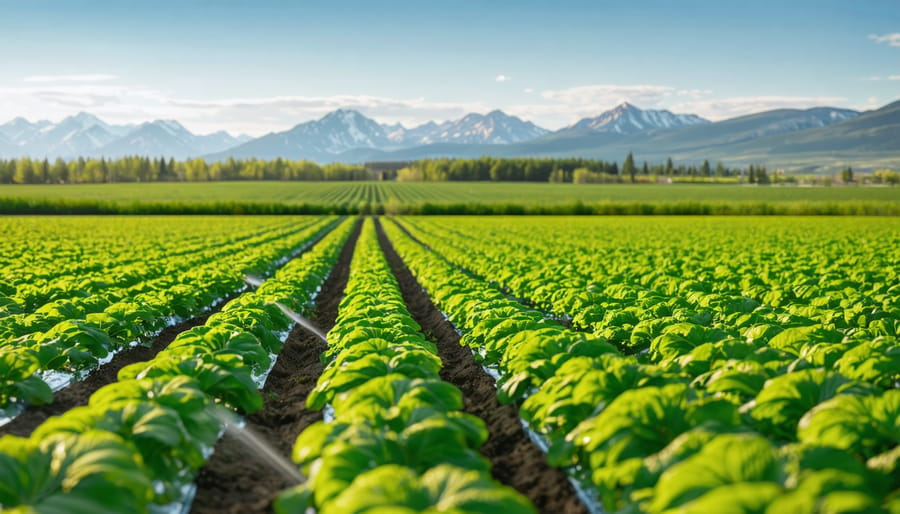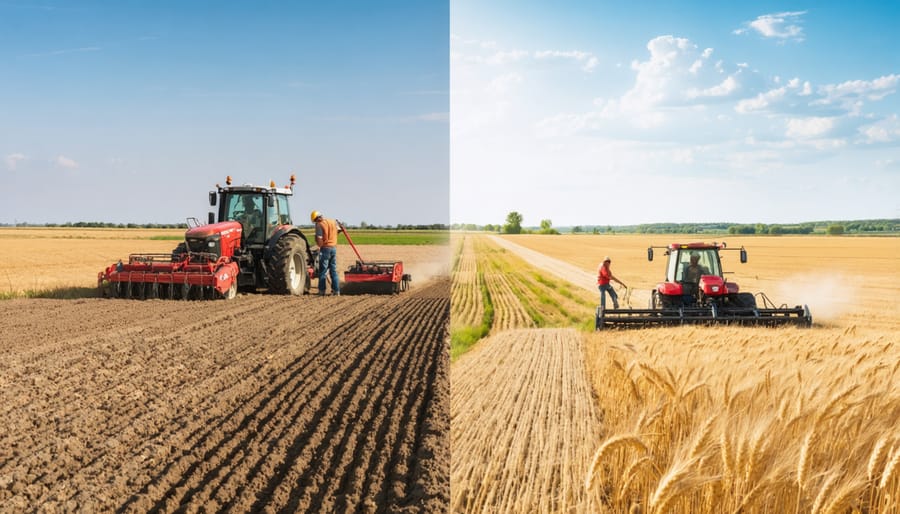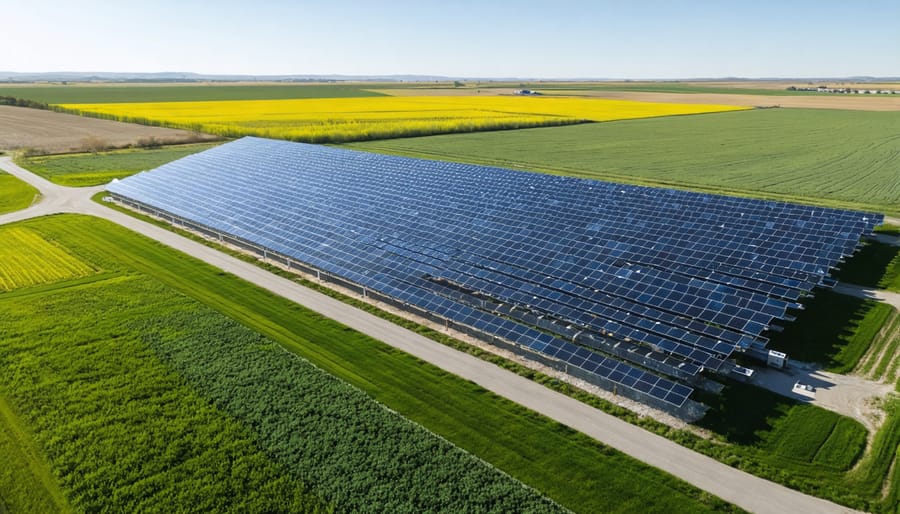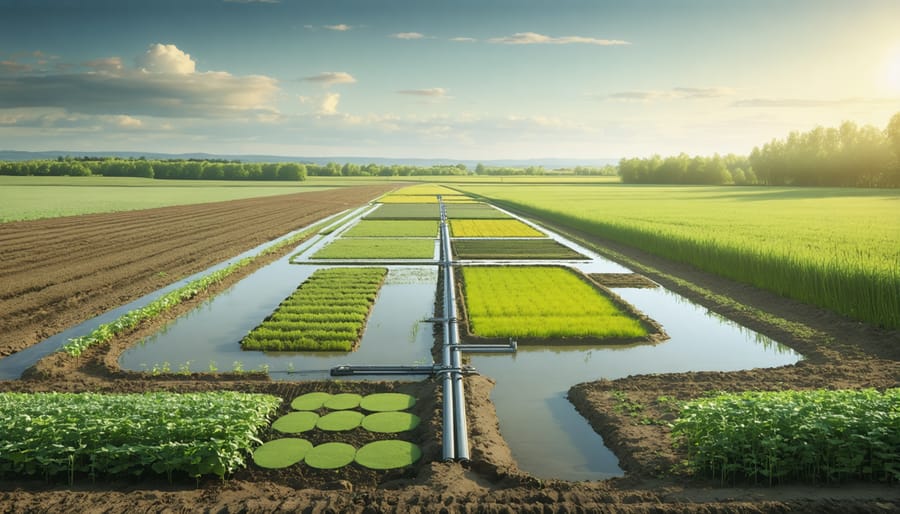Water’s role in organic systems sparks critical questions for Alberta’s farming community, particularly as we face increasing pressure on our water resources. While water itself isn’t technically organic matter – lacking the carbon-based molecular structure that defines organic compounds – it serves as the fundamental carrier of organic nutrients and sustains all organic processes in soil and crops. For Canadian farmers managing organic operations, understanding water’s unique position helps inform better irrigation practices and soil management decisions.
On Alberta’s prairies, where annual rainfall averages between 300-500 millimetres, recognizing water’s relationship with organic matter becomes especially crucial. When combined with organic materials like crop residue and compost, water creates the living bridges that connect soil particles, nurture beneficial microorganisms, and support robust root systems. This synergy between water and organic components forms the foundation of healthy, productive agricultural ecosystems that can better withstand our region’s climatic challenges.
Understanding Water in Organic Systems
Is Water Considered Organic Matter?
Despite water’s essential role in organic farming and life processes, it’s not technically considered organic matter. The reason is straightforward: water (H2O) lacks carbon atoms, which are the defining characteristic of organic compounds. However, don’t let this classification mislead you – water is absolutely crucial for all organic processes on your farm.
Here in Alberta, where we often face moisture challenges, understanding water’s relationship with organic matter is particularly important. Think of water as the delivery system that helps transport nutrients through your soil and into your crops. It’s the medium that enables decomposition of organic materials and supports the billions of beneficial microorganisms that maintain soil health.
When you’re working your fields, you’ll notice how water interacts with organic matter to create that rich, dark soil we all strive for. While water itself isn’t organic matter, it’s the catalyst that makes organic processes possible. It’s similar to how a truck isn’t part of your harvest, but you couldn’t bring in the crop without it.
For our Alberta farming community, this understanding helps us make better decisions about irrigation and soil management practices.

Water as a Catalyst for Organic Processes
Water plays a crucial role as nature’s master facilitator in organic processes, particularly here in Alberta’s diverse agricultural landscape. Think of water as the behind-the-scenes coordinator that makes organic matter transformation possible. When water interacts with organic materials like crop residue or compost, it creates the perfect environment for beneficial microorganisms to thrive and do their work.
In our prairie soils, water helps break down complex organic compounds into simpler forms that plants can readily use. For instance, when moisture levels are optimal (around 50-60% water holding capacity), decomposition rates can increase by up to three times compared to dry conditions. This process releases essential nutrients like nitrogen, phosphorus, and potassium back into the soil.
Many Alberta farmers have observed that properly irrigated fields show faster stubble breakdown and improved soil structure. Water also helps transport dissolved organic matter through the soil profile, creating nutrient-rich pathways for root systems. During our spring thaw, this movement becomes particularly active, distributing nutrients throughout the soil layers and preparing the ground for the growing season.
Remember, maintaining proper soil moisture isn’t just about irrigation – it’s about supporting the entire organic cycle that keeps your soil healthy and productive.
Water Conservation Technologies for Alberta Farms
Efficient Irrigation Systems
Modern efficient irrigation methods have revolutionized how Alberta farmers manage their water resources. Drip irrigation stands out as a game-changer, delivering water directly to plant roots through a network of tubes and emitters. This precision approach typically reduces water usage by 30-50% compared to traditional sprinkler systems, while promoting healthier crop growth.
Many Alberta farmers have embraced smart irrigation controllers that integrate weather data and soil moisture sensors. These systems automatically adjust watering schedules based on real-time conditions, preventing over-irrigation during rainy periods and increasing application during dry spells.
Subsurface drip irrigation (SDI) has gained popularity among root crop producers, with buried irrigation lines providing consistent moisture levels while minimizing surface evaporation. Local farmer Mike Thompson from Lethbridge reports a 40% water savings since implementing SDI in his potato fields.
Other water-efficient technologies gaining traction include micro-sprinklers for orchards and variable rate irrigation systems that adjust water application based on field mapping. These innovations not only conserve water but also reduce energy costs and labour requirements.
For smaller operations, soaker hoses and timer-controlled systems offer cost-effective solutions that maintain consistent soil moisture levels while preventing water waste. These systems are particularly effective when combined with organic mulching practices, which further reduce evaporation and maintain soil health.
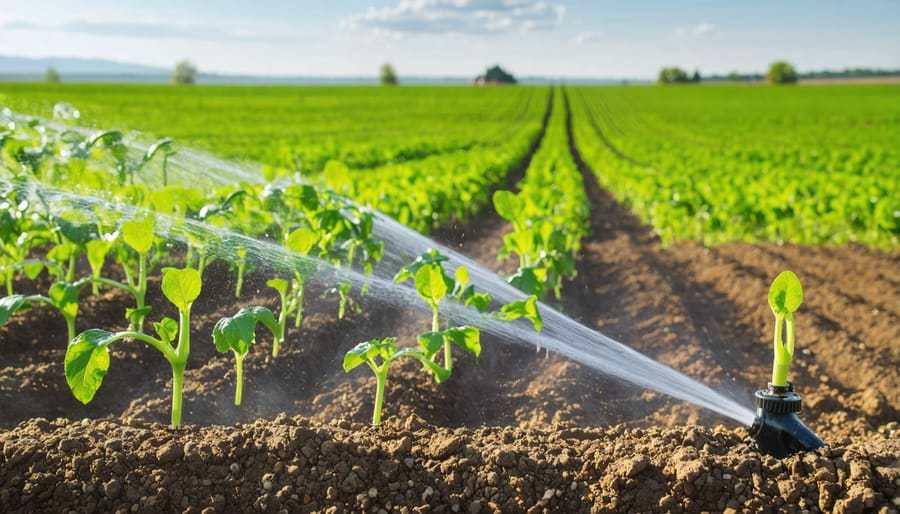
Soil Water Retention Strategies
Improving your soil’s water-holding capacity is crucial for sustainable farming in Alberta’s varied climate. Implementing effective soil water retention techniques can significantly reduce irrigation needs while supporting healthy crop growth.
Start by incorporating organic matter through cover crops and crop residue management. Adding composted materials can increase water retention by up to 20% in most soil types. Consider using green manures like clover or alfalfa, which improve soil structure while adding valuable nutrients.
Maintain soil coverage year-round using mulch or living ground covers. This practice reduces evaporation and protects soil structure. Many Alberta farmers have found success with crop residue retention, leaving at least 30% coverage after harvest.
Implement conservation tillage practices to preserve soil structure and organic matter. Minimal soil disturbance helps maintain natural water pathways and beneficial microorganism populations. Consider adopting no-till methods where suitable for your operation.
Build soil aggregates by encouraging beneficial soil biology. Add mycorrhizal fungi and beneficial bacteria through compost teas or commercial inoculants. These organisms create stable soil structures that enhance water retention while improving nutrient availability.
Remember to regularly monitor soil moisture levels and adjust management practices accordingly. Simple tools like moisture meters can help optimize irrigation timing and prevent water waste.
Real Alberta Success Stories
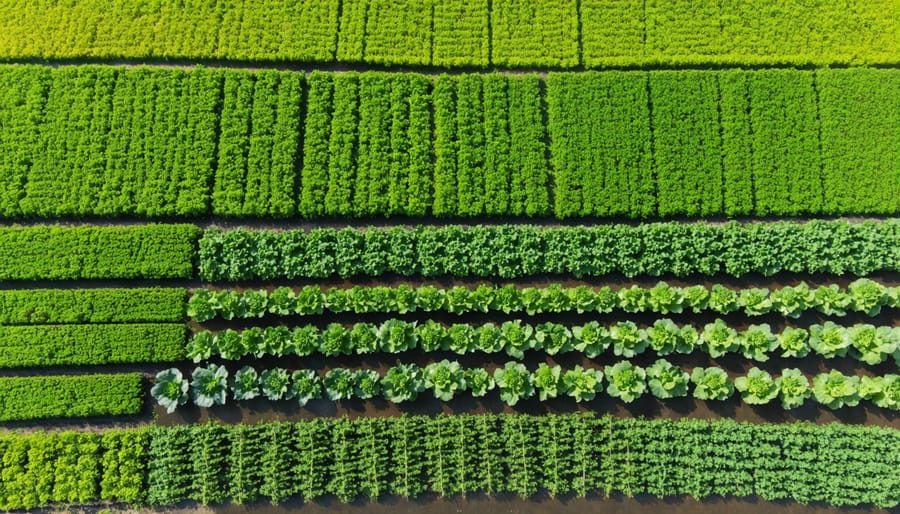
Southern Alberta Vegetable Farm Case Study
The Henderson Family Farm, located just outside of Lethbridge, Alberta, stands as one of the region’s most compelling water conservation success stories. Over the past decade, this third-generation vegetable operation has transformed its 200-hectare farm into a model of efficient water management in semi-arid conditions.
By implementing a combination of drip irrigation and soil moisture monitoring systems, the Hendersons reduced their water usage by 40% while maintaining crop yields. Their approach focuses on building soil organic matter through cover cropping and composting, which has increased their soil’s water-holding capacity from 15% to 25%.
The farm’s success hinges on three key strategies: precise irrigation scheduling based on real-time soil moisture data, extensive mulching using locally sourced straw, and strategic crop selection favoring drought-resistant varieties. During the 2021 drought, when many neighbouring farms struggled, the Hendersons maintained 85% of their normal production levels.
Their methods have inspired other local farmers to adopt similar practices, creating a ripple effect throughout Southern Alberta’s agricultural community. The farm regularly hosts field days, sharing their experiences and helping other farmers implement water-smart techniques in their operations.
Central Alberta Mixed Operation Success
The Thompson family farm, located just outside Red Deer, demonstrates how integrated water management can transform agricultural operations. Over the past five years, this 640-hectare mixed operation has successfully combined traditional farming wisdom with innovative water conservation techniques.
By implementing a comprehensive soil health program that includes cover cropping and reduced tillage, the Thompsons have increased their soil’s organic matter content from 2% to 4.5%. This improvement has dramatically enhanced their land’s water-holding capacity, reducing irrigation needs by approximately 30%.
The farm utilizes a sophisticated moisture monitoring system across different field zones, allowing for precise irrigation scheduling. They’ve also installed water-efficient sprinklers and drip irrigation systems in their market garden section, which has cut water usage by 40% while maintaining crop yields.
Perhaps most notably, the Thompsons have created a network of wetland buffer zones that naturally filter and retain water. These areas not only support wildlife habitat but also serve as natural reservoirs during dry spells. During the 2021 drought, these water management strategies helped the farm maintain 85% of its typical production levels while neighboring properties struggled significantly.
The operation’s success has inspired local farmers to adopt similar practices, with the Thompsons regularly hosting field days to share their experiences and techniques with the community. Their approach proves that water conservation can align perfectly with profitable farming in Central Alberta’s climate.
While water itself isn’t classified as organic matter, understanding its vital role in organic farming systems is crucial for sustainable agriculture in Alberta. Throughout this discussion, we’ve explored how water interacts with organic matter in soil and its significance in maintaining healthy, productive farmland.
For Alberta farmers looking to enhance their water management practices, several key actions can make a meaningful difference. Start by conducting regular soil tests to monitor organic matter content and water retention capabilities. Consider implementing cover crops during shoulder seasons to improve soil structure and water-holding capacity. Many successful Alberta farmers have found that reducing tillage operations helps maintain soil moisture and organic matter levels.
Looking ahead, climate-smart water management will become increasingly important. Connect with your local agricultural extension office or join farmer-led watershed stewardship groups to stay informed about best practices and funding opportunities for water conservation projects. The Alberta Farm Sustainability Extension Working Group offers excellent resources and networking opportunities for farmers interested in improving their water management strategies.
Remember that small changes can lead to significant improvements. Whether it’s adjusting irrigation schedules based on soil moisture monitoring, incorporating more organic matter through crop residue management, or installing water-efficient irrigation systems, every step counts toward more sustainable water use.
By working together and sharing knowledge within our farming community, we can build more resilient agricultural systems that make the most of our water resources while maintaining healthy, productive soils. Consider reaching out to neighbouring farms that have successfully implemented water conservation strategies – their experiences could provide valuable insights for your operation.



